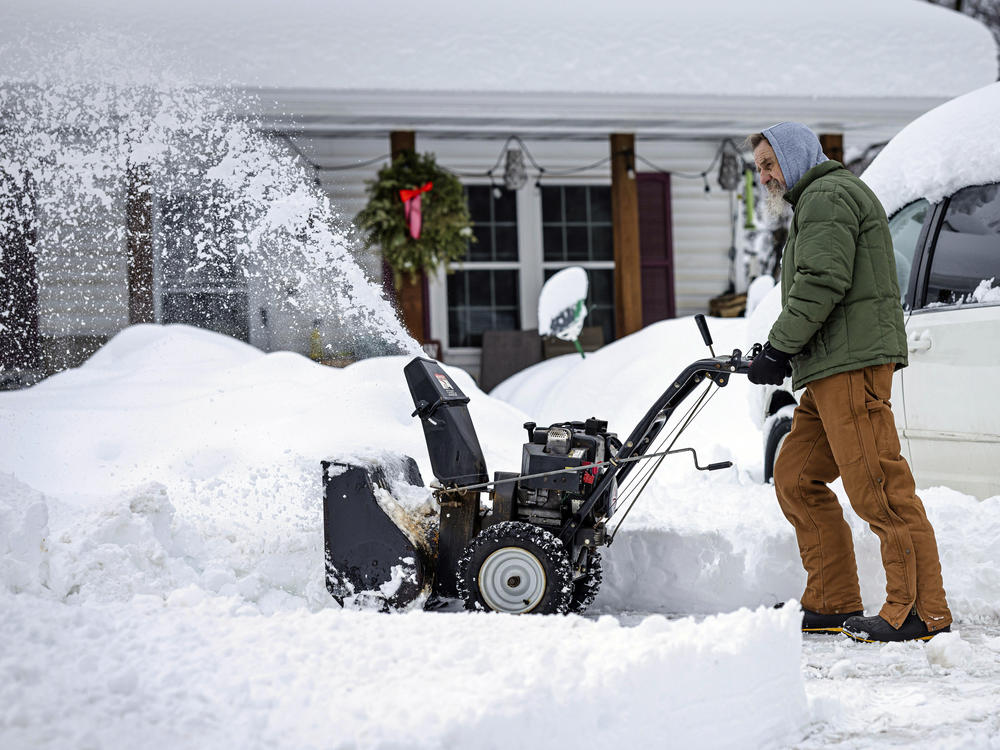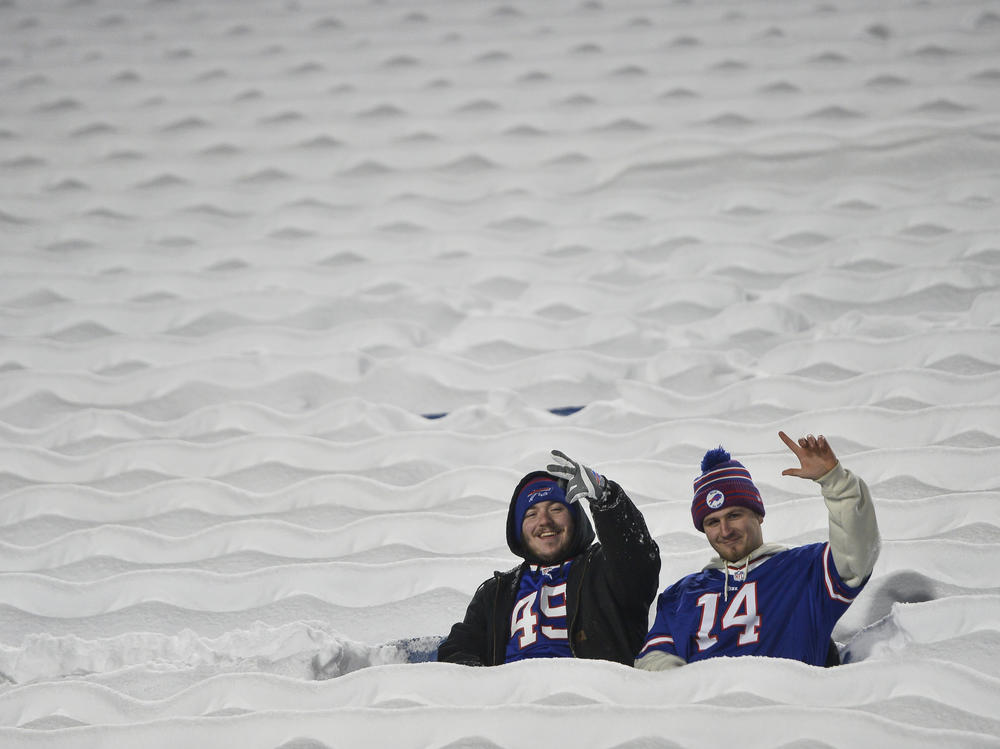Section Branding
Header Content
A severe arctic storm could threaten holiday travel across the U.S.
Primary Content
Updated December 20, 2022 at 7:45 PM ET
Millions of Americans may want to reconsider their holiday travel plans, as bitter cold, biting wind and heavy snow are expected across the U.S. this week, imposing treacherous conditions just days before Christmas.
A bulletin from the National Weather Service (NWS) says a "strong arctic high pressure system," was sweeping down from Canada on Tuesday and appears poised to march towards the Great Plains, the Midwest and onto the Southeast on Wednesday, Thursday and Friday, bringing life-threatening blizzard conditions and cold weather systems across 17 states.
Heavy snowfall and limited visibility caused Vancouver International Airport to temporarily shut down Tuesday, stranding scores of passengers. That could be a sign of things to come for holiday travelers in the U.S., as the frigid weather system moves across the country this week.
At least 250 flights into and out of the Seattle-Tacoma airport were cancelled Tuesday as heavy snow fell there, according to the tracking site Flight Aware. The Cascade Mountains in Washington state were seeing the heaviest snowfall on Tuesday, but nearby lowlands in Idaho, Montana and Wyoming could see a foot of snow, according to the NWS. The region could see another blast of snow and ice on Thursday.
The incoming arctic front will then cross over the northern Rockies, Great Basin and Northern Plains regions, sending temperatures plummeting as low as minus 30 degrees, with winds gusting at up to 60 mph.
Snow is likely to move into parts of Nebraska, Kansas, the Dakotas, Minnesota, Iowa and Wisconsin on Wednesday. By Thursday, blizzard conditions could hit the Upper Midwest and Great Lakes regions, including Chicago, potentially causing significant flight delays and cancellation at O'Hare International Airport, one of the nation's biggest airline hubs. The major travel hub cities of Denver, Salt Lake City and Minneapolis are expected to be impacted, too.
For the eastern U.S., heavy rain on Tuesday and Wednesday could result in snow or sleet in the Appalachian states on Thursday.
By Friday, temperatures could hit the season's lowest in what is only the first week of winter. Even northern Florida cities like Jacksonville and Tallahassee could see a chill as low as 20 F on Christmas Eve.
Most major airlines, including United, American, Delta, JetBlue and Southwest, are offering to waive change fees and fare differences for those wanting to change flights so they can travel before or after the storm, within small rebooking windows.
"That allows travelers who have tickets now and throughout the holiday week to take a look and reconsider," says Kathleen Bangs, spokesperson of the tracking site FlightAware.com. "Reconsider what day you want to go on, maybe reconsider the route if you have a connecting city, and reconsider possibly just changing that ticket to later on in the week or even banking that ticket for later use."
Her advice to all travelers this time of year:
"You really need to have a backup plan" Bangs says. "And that could mean anything from a secondary ticket on a different airline that leaves later in the day or perhaps the next morning. It means a reroute through another city where perhaps you get within a couple hundred miles of your destination and then you rent a car or you take a train."
Bangs says that in this weather there's a chance any flight could be canceled at any time, and it may be difficult to get a hold of a representative from an airline.
AAA says of the 113 million Americans traveling this holiday season, more than 90% of them will be driving. And with forecasts calling for blowing and drifting snow, as well as whiteout conditions in some parts, they should proceed with extreme caution, forecasters say.
"Low visibility will create even more dangerous travel conditions on top of snow covered roadways," the NWS says. "Additionally, the strong winds could lead to potential power outages from the Midwest to the Northeast."
"It is imperative that travelers check the latest forecast before venturing out."
An outage that left 180,000 without power across New England over the weekend was resolved by Monday, but the Associated Press reported that attempts to bring extra utility workers into the state ahead of this week's storm were stymied by slick roads.
Police across New England also said they responded to hundreds of crashes and stranded vehicles, according to local media reports.
Frostbite is another risk for those trying to brave the cold, the NWS says. Subzero temperatures in some parts of the U.S. this week could lead to frostbite on exposed skin in as little as 10 minutes.
Those venturing outside should dress in layers, cover their skin and change into dry clothing as soon as possible. But, experts say, the best prevention by far is simply to stay indoors.
Copyright 2022 NPR. To see more, visit https://www.npr.org.



